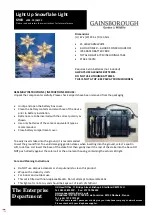
Cable or Conductor Rated Voltage
Whenever possible, use the equipment manufacturer’s
recommended test voltage. Most conductors (shielded,
paired, etc.) have a voltage limit printed on the outer
insulation that can be used in the absence of a manufacturer’s
recommendation. When using the rating printed on the outer
jacket, use two times the value, up to the 1000 volts maximum.
Commonly used voltages.
Humidity and Dew Point
In oder to make an accurate assessment of a motor’s life
expectancy, conditions must be similar each time it’s tested.
If the equipment you are testing is at or below the dew point
temperature, water-condensation may collect around the
windings and connections. Condensation can make a motor
appear to be failing rapidly when it actually has years of
serviceable-life left.
Humidity also affects readings at the same time it affects
insulation resistance when the motor is running. Seasonal
deviations in insulation resistance may be noted, but should
not be neglected. The same motor may perform fine in winter
when humidity is low and begin to fail in summer when
humidity increases.
Humidity and dew point information is available for some
areas by phone (see your local listing). UEi also makes special
purpose instruments to give you accurate and instant humidity,
dew point and temperature information.
Specified Cable/Equipment
Voltage Rating
50-100
100-440
440 and above
Megohmeter DC Voltage
Level
250
500
1000
15
















































